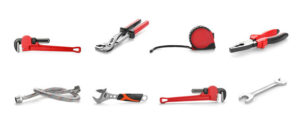Choosing Aluminum Free Deodorant is more than just a cosmetic choice. It’s about supporting a healthy lifestyle and embracing a more natural approach to personal care.

Advances in natural chemistry have made it possible to effectively neutralize body odor without relying on aluminum. However, the initial transition can take a few weeks to a month for some people.
The aluminum in deodorants is designed to block sweat, but it’s also been linked to irritation and other health issues. It’s no wonder then that more and more people are seeking out non-toxic alternatives, particularly ones that also focus on skin care. This trend reflects a wider desire for natural products that take a holistic approach to personal hygiene, while also aligning with a preference for more eco-friendly products in general.
Aluminum free deodorants are specifically formulated to tackle body odor at its source—instead of masking it with artificial fragrances or covering it up with layers of chemicals, they use natural ingredients that are gentle on your pits. They’re also free from the sketchy additions that are found in many other deodorants, including parabens (preservatives that can jack up your hormone levels), alcohol, triclosan, and phthalates.
This aluminum free deodorant from Tom’s of Maine goes the extra mile, utilizing botanicals to control odor-causing bacteria without astringents like alcohol, which can be extremely drying on your underarms over time. It’s also cruelty-free, vegan, and made with organic shea butter and coconut oil to keep your underarms soft and healthy.
Most people who try out a new deodorant will experience some discomfort during the first week of switching, as their bodies process the aluminum they’ve been used to. This is normal, but should subside after a few days. The key is to apply your aluminum free deodorant liberally and frequently throughout the day. This will help to ensure that odor-causing bacteria don’t get the chance to smell you up, even during high-stress moments.
This aluminum free deodorant from Bevel uses arrowroot as the main ingredient instead of baking soda, which can be irritating to some people. It’s also infused with a blend of essential oils that provide a light, clean scent. It’s available in both a spray and stick, so you can choose the one that’s right for you. The subtle fragrances—like Cucumber & Green Tea, Pomegranate & Lemon Verbena, and Cotton Flower & Sandalwood—will make you feel good both inside and out.
It’s effective
Traditionally, antiperspirants contain a synthetic group of aluminum salts that prevent sweating by blocking the sweat glands in your underarms. This prevents the release of toxins and bacteria that would otherwise trigger body odor, but the problem is, these chemicals can also irritate your skin.
This is why many people choose to switch to an aluminum free deodorant. The good news is that advances in natural chemistry have allowed for products that effectively neutralize odor without the use of aluminum. This means that you can feel confident that your new deodorant will keep you smelling fresh and oh-so-clean.
Most aluminum-free deodorants will still keep you smelling fresh by targeting odour-causing bacteria with ingredients like baking soda and activated charcoal. In addition, they will typically include soothing ingredients like shea butter and shea oil to protect your delicate underarm area. They may also have extra moisture-absorbing properties to keep you hydrated throughout the day.
Another great thing about aluminum-free deodorants is that they won’t block your sweat glands like their metal counterparts. Sweating is a completely natural process that serves important purposes like temperature regulation, toxin release, and more. So, when you switch to an aluminum-free deodorant, your body will take a little bit of time to recalibrate and get used to the freedom of sweating again.
The best way to minimize any discomfort or excess sweat during this transition period is to choose a cooler, less humid time of year to make the switch. You can also help things along by regularly washing and exfoliating your underarms, especially if you’re using an aluminum-free deodorant. You can even try wearing loose, breathable fabrics to help reduce sweating and odour-causing bacteria.
After a few weeks of transition, you should be able to comfortably wear your aluminum-free deodorant with confidence. However, if you experience any redness, itching, or rashes under your arms when using an aluminum-free deodorant, be sure to talk to a doctor right away as these symptoms could indicate an allergic reaction to an ingredient in the formula. Fortunately, the vast majority of people who switch to an aluminum-free deodorant experience no issues at all.
It’s natural
When it comes to personal hygiene, many people are turning to aluminum-free deodorants. These products offer natural odor control without interfering with the body’s sweating process and they are available in a variety of forms including sticks, sprays, gels, and creams. They also come in a wide range of scents including floral, spice, and wood. Many of them are organic and are free from parabens, phthalates, propylene glycol, and other synthetic ingredients. They’re a great choice for those who want to avoid toxins and support local business and sustainable practices.
The popularity of aluminum-free deodorants is fueled by concerns over the health effects of aluminum compounds. It is believed that when aluminum interacts with the bacterial population in the skin’s pits, it can block the evaporation of perspiration and lead to excessive sweating. This excess sweat can cause rashes and skin irritation. Fortunately, advances in natural chemistry have allowed for the development of aluminum-free deodorants that do not interfere with the body’s physiologic function but still offer effective odor protection.
Aluminum-free deodorants use naturally derived ingredients such as baking soda, activated charcoal, and mineral salts to control odor by absorbing the sweat and inhibiting odour-causing bacteria. These natural ingredients are often combined with soothing botanicals, such as arrowroot and shea butter, to ensure the deodorant is gentle on the skin. These ingredients are also free from pore-clogging chemicals like alcohol and fragrance, making them suitable for even the most sensitive skin.
While many people experience no side effects when using an aluminum-free deodorant, some may experience a brief period of increased sweating during the transition phase. This is caused by the body’s need to rid itself of the aluminum it has been blocking with antiperspirant and is a completely normal part of the transition. Staying hydrated during this time is a good idea.
Once you’ve made the switch to an aluminum-free deodorant, you can expect your odor-control needs to be met for the long term. However, it’s important to remember that everyone’s body chemistry is different. If you find that your new deodorant does not work as well for you, try switching to a different one or using it in combination with other products such as a charcoal bar or baking powder.
It’s safe
Many people have heard that long-term aluminum antiperspirant deodorant use can cause breast cancer, but this isn’t true. Despite this, there is still debate about the safety of aluminum in deodorant and health concerns for its potential to clog pores and lead to other issues like rashes. This is why so many people are choosing to switch to Aluminum Free Deodorant.
Aluminum-free deodorants work in a few different ways to reduce body odor. Some natural options use baking soda to neutralize odor and others have antibacterial ingredients that target odor-causing bacteria directly. Still other products use arrowroot powder, cornstarch and other natural absorbents to soak up excess sweat without blocking pores or causing stains. There are even deodorants with fragrances that mask odor and smell good instead of using chemicals to do so.
Some aluminum-free deodorants also avoid talc, a known irritant to sensitive skin. Some of these deodorants also are free of parabens, propylene glycol and other synthetic ingredients found in many standard deodorants that can irritate or chafe. Lastly, these deodorants can be used by anyone, even those with very sensitive skin.
The key to making a successful transition to an aluminum-free deodorant is to give yourself time to adjust. This transition period can vary from person to person and may take a few weeks. It’s also important to stay hydrated, especially during this time. During this time, you’ll want to apply your new deodorant more often, especially if you’re active or sweat more than usual. It’s also a good idea to wear loose, breathable clothing so that you don’t cause any irritation.
If you have any rashes or other irritation, stop using the product immediately. It’s likely that your new deodorant contains an ingredient or other substance that is causing this reaction and it will only get worse with continued use.
Choosing to switch to an aluminum-free deodorant is an easy way to make a healthy choice for your body. It’s also a great way to support sustainable and ethical companies that care about their workers, the environment and the communities they serve.


